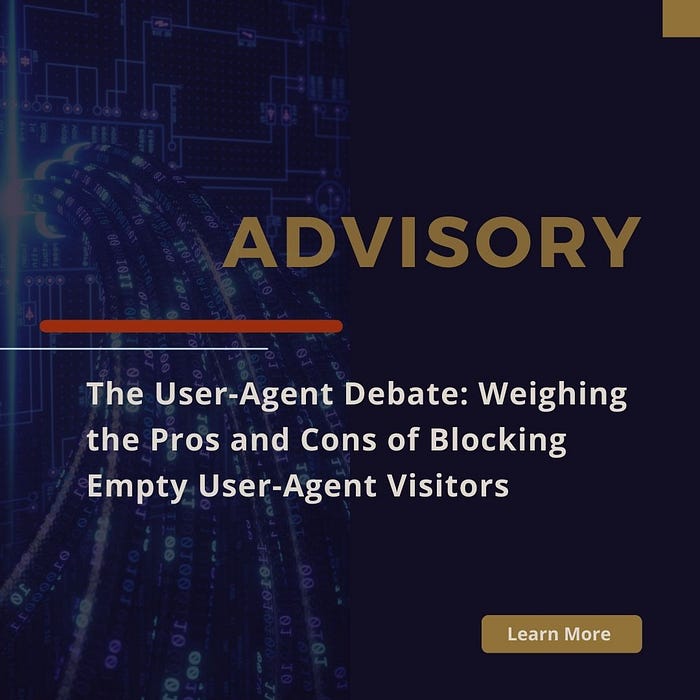The User-Agent Debate: Weighing the Pros and Cons of Blocking Empty User-Agent Visitors

This publication covers the various aspects of blocking empty User-Agent visitors, including methods, cases for and against, practical considerations, pricing options, and best practices. Risk-based assessments, regular monitoring, and selective blocking and filtering are recommended to strike the right balance, alongside incorporating machine learning and AI to adapt to evolving User-Agent trends and challenges.
Webmasters and developers have long debated whether to block empty User-Agent visitors. This publication will explore the pros and cons of blocking empty User-Agent visitors, providing readers with a comprehensive understanding of this decision’s implications, risks, and benefits. The point of view is mainly technical, with a touch of practical business and operational perspectives.
This publication contains over 6'800 words, which equates to around 27 full professional A4 pages and provides some answers. Here are the topics it covers.
The Missing User-Agent
A User-Agent header is a string sent by a user’s browser or device when they access a website. This header provides information about the user’s browser, operating system, and device type. Websites and servers often use this infor…
